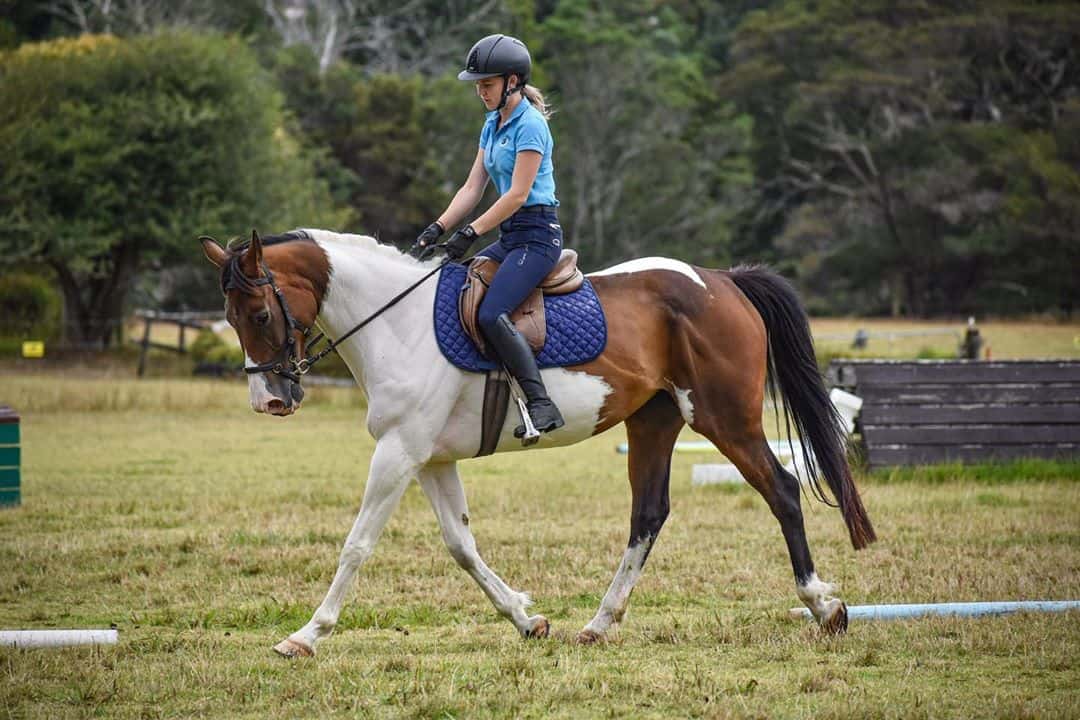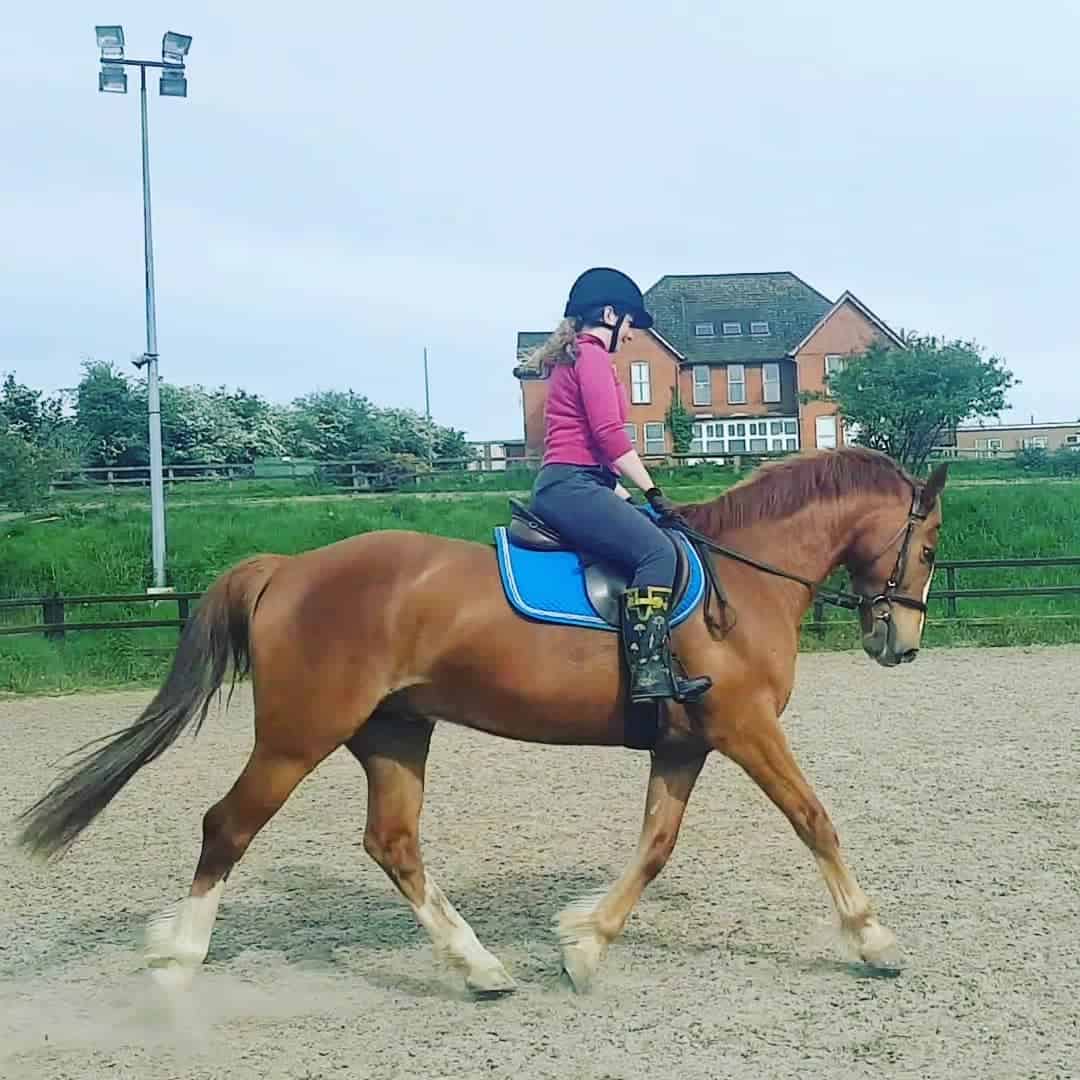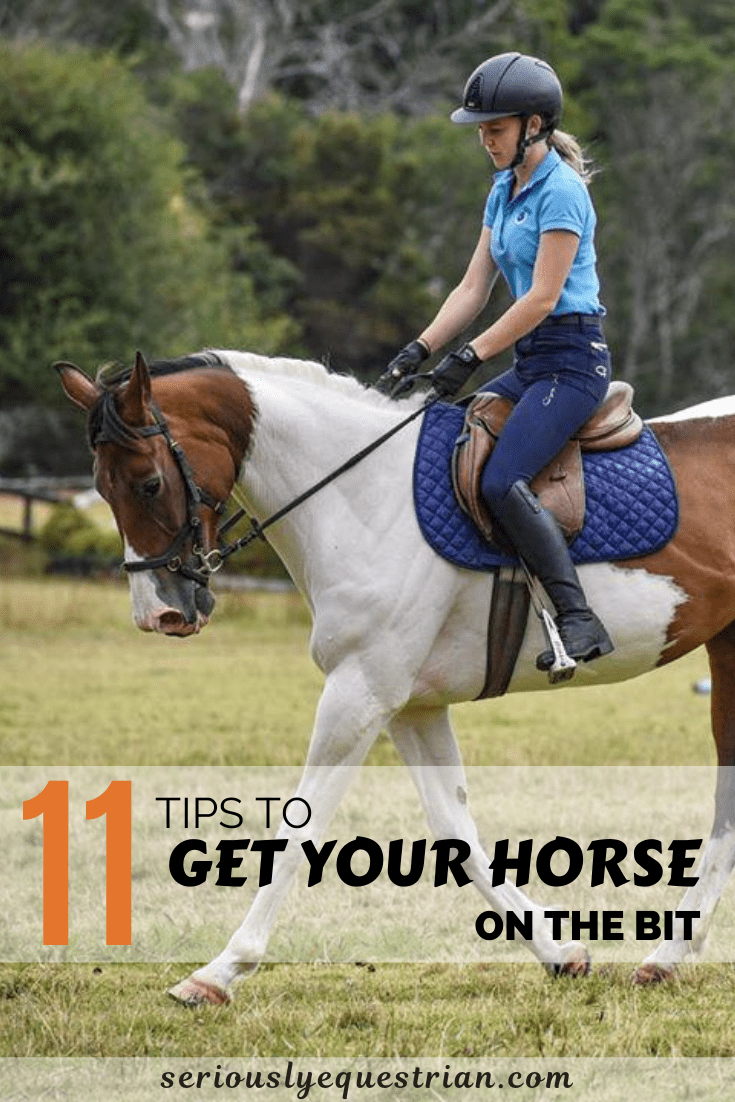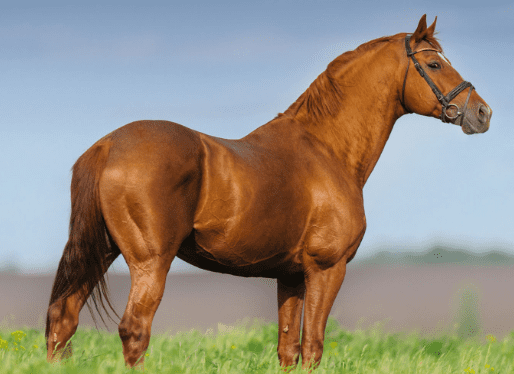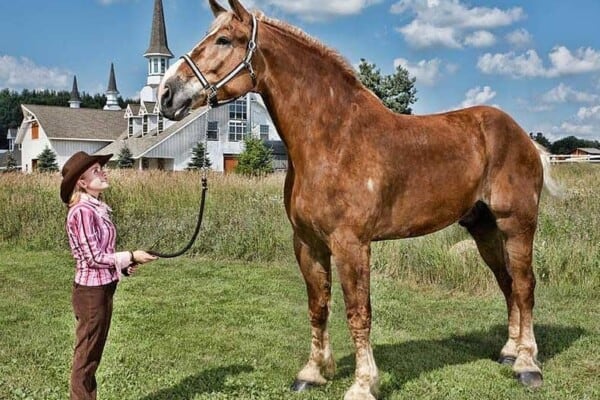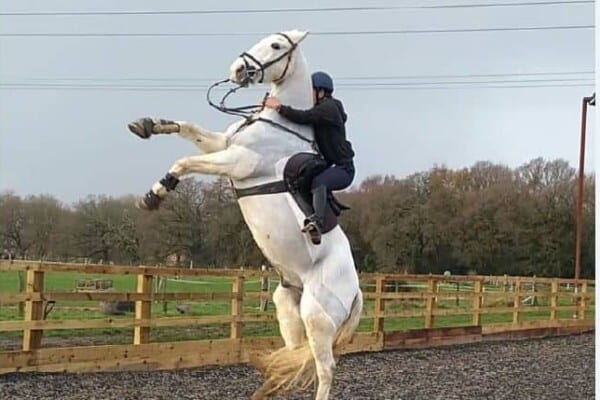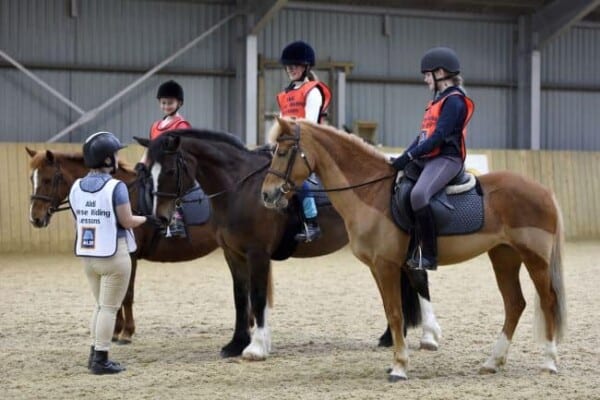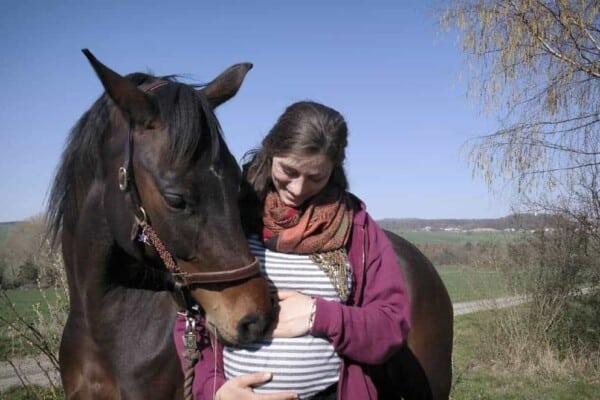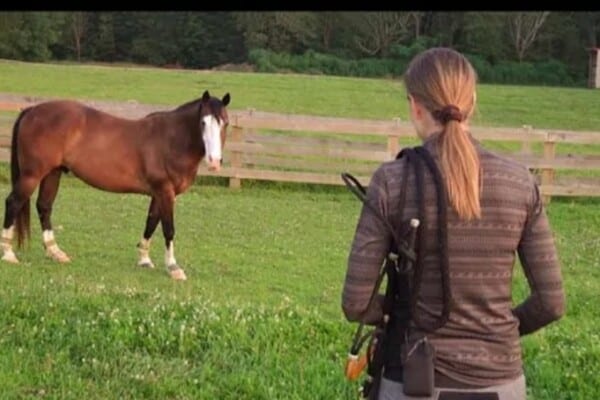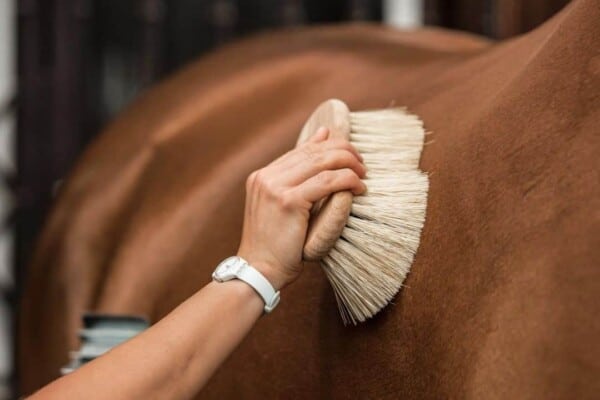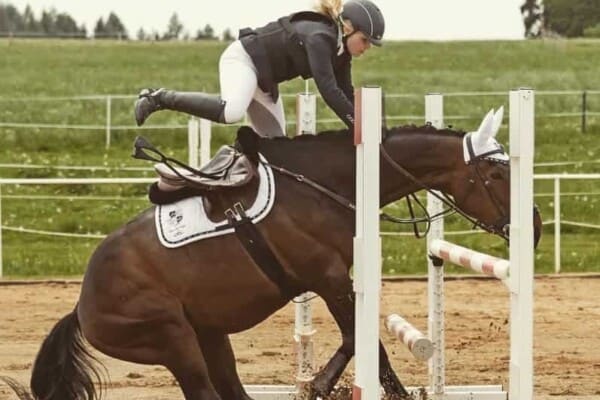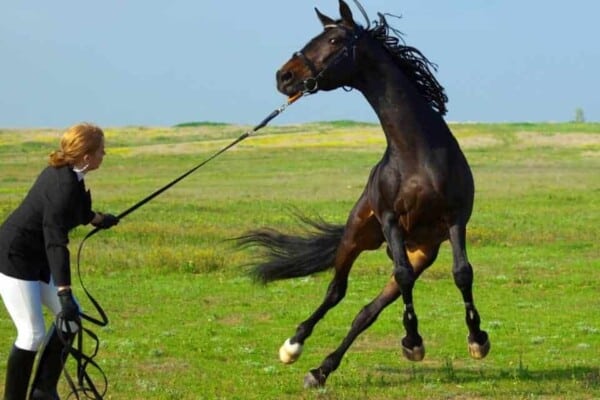Getting your horse on the bit is a phrase which conjures up confusion and mystery in equal measure. Many riders focus on the front end of the horse and concentrate on the position of the horse’s head and, whilst this is relevant, it can be rather like picking up the stick by the wrong end.
Working a horse on the bit encompasses lots of different aspects of the horse’s body which all come together like a jigsaw puzzle to form a complete picture – the outcome is dependent on the horse’s athletic ability, the rider’s knowledge and experience, to some degree the horse’s actual conformation and, the particular level of training. Many riders think that a horse being on the bit simply refers to the placement of the head but a horse truly working on the bit should exhibit the following features:-
- A natural head carriage which is not forced or placed and will vary depending on the level of training – novice horses will have a lower head carriage and neck placement than horses doing advanced work
- A horse which is straight, i.e. the absence of crookedness so the shoulders sit in front of the quarters at all times
- A horse which is travelling truly forward, i.e not running
- A soft supple neck with a bend in the direction of travel
- Longitudinal softness over the top line, the horse’s back, which allows the hind leg to come through and work with activity and engagement
- Balance and self-carriage commensurate with the horse’s age and level of training – a novice or young horse will naturally carry more weight on the forehand than a more established horse or a horse working at the higher levels
11 Techniques to help get your horse on the bit
- Don’t focus on where the horse is putting his head, concentrate instead on the activity of the hind leg
- The outline should not be imposed by the rider’s hand but the horse should work from behind into the hand – it is a common mistake to create an artificial head position by restricting or blocking with the hand
- Use regular transitions and half halts to encourage the activity of the hind leg
- The horse needs to be balanced and in self-carriage relevant to his level – many riders make the mistake of chasing the horse along in order to activate the hindquarters and all this does is encourage the horse to run onto the shoulder and make the forehand heavy which will disconnect the hindquarters
- Use the outside rein to control the straightness of the horse
- Ensure the horse is straight by working on squares – if the hindquarters are not behind the shoulders then this inherent crookedness will always affect the ability of the horse to work on the bit because the horse will never be working truly forwards from behind
- Work off the track – working on the track or next to the fence will make the horse crooked unless you travel everywhere in shoulder fore or shoulder in
- Include supple horse work like small circles and leg yield to encourage the horse to become laterally soft. When the horse is soft laterally, he will be able to lift and soften the back which will allow the hind leg to come through
- Don’t mistake speed or tempo for activity, the horse must travel forward but should not be running which will encourage loss of balance and disengagement of the hind leg. Use constant half halts to control the speed whilst encouraging the horse to use his hindquarters to produce controlled energy
- Use mirrors and film to help you analyse what you are feeling when you ride
- Don’t neglect your own position – mistakes in rider technique or faults in the rider’s position will actively impede a positive influence on the horse
Riding a horse on the bit does not involve one dominant feature; a collection of different things have to come together to create the overall picture. Working a horse on the bit is a term that is often misused and applied to situations when the horse is working in a nice outline or frame but would not be said to be truly on the bit.
Level of riding knowledge and experience gained through training is essential to learning how to work a horse correctly. One of the biggest difficulties for riders is that they often only have little bits of knowledge, some taught some just acquired, and they lack the entire system and the complete picture. Working to an established system of progression with a trainer is crucial to understanding how to train a horse to work on the bit correctly and achieve long term goals, with progression in both horse and rider training.
Rider development tips
Developing the riders’ feel and understanding by riding other horses some of whom may be more established in their level of work can be really helpful in the progression of education and feel. Correctly working a horse on the bit is a journey rather than a quick fix. Building and adhering to a coherent plan with a sympathetic trainer or instructor will help the rider understand the process that is required to train the horse correctly; it is about developing rider education and ability whilst also at the same time training the horse.
- Lunge lessons will help the rider focus on their own position and work without stirrups encourages depth of seat, balance and feel
- Establish a structured training program for the horse with defined goals
- Study the art of equitation away from the saddle, there are huge written and online resources
Working a horse on the bit is the final sum reflecting the involvement of many different parts. It is easy for the rider to focus on one aspect of training or development to the exclusion of all others and this will never lead to success. An understanding of the complete picture is essential first.

